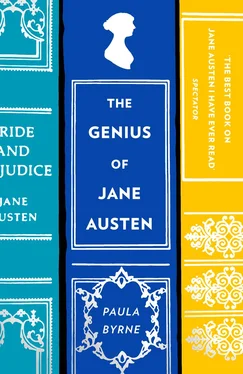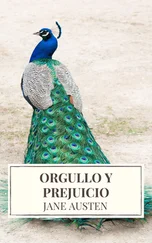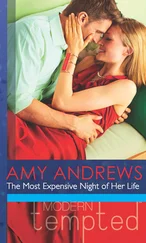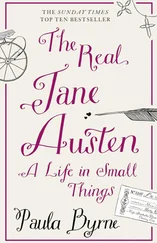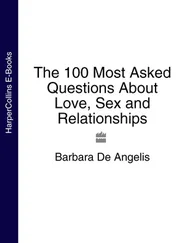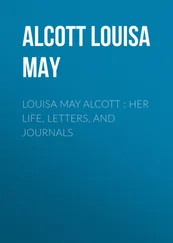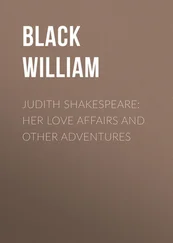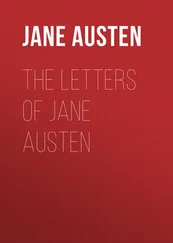Though we admired what she did, she never carried us with her. We knew that we were at a display of art, and never felt for a moment the illusion of its being a natural scene. 22
The preoccupation with the play as a vehicle for the star actor, popularly called ‘the possession of parts’, went hand-in-hand with the theatre’s proclivity towards an established repertory. 23It was common to see the same actor in a favourite role year in, year out. Dora Jordan’s Rosalind and Little Pickle, both of them ‘breeches’ roles, were performed successfully throughout her long career. Siddons’s Lady Macbeth and Constance were staples of her repertory throughout her career, and, even after her retirement, they were the subject of comparison with other performances. The tradition of an actor’s interpretation of a classic role, which still survives today, was an integral part of an individual play’s appeal. Critics and the public would revel in the particularities of individual performances, and they would eagerly anticipate a new performance of a favourite role, though innovations by actors were by no means a guarantee of audience approbation.
In the early autumn of 1813, Jane Austen set out for Godmersham, stopping on the way in London, where she stayed with her brother Henry in his quarters over his bank at Henrietta Street, Covent Garden. On the night of 14 September, the party went by coach to the Lyceum Theatre, where they had a private box on the stage. As soon as the rebuilt Drury Lane had opened its doors to the public, the Lyceum had no choice but to revert to musical drama. The Austens saw three musical pieces. The first was The Boarding House: or Five Hours at Brighton ; the second, a musical farce called The Beehive ; and the last Don Juan: or The Libertine Destroyed , a pantomime based on Thomas Shadwell’s The Libertine . Once again, Jane Austen’s reflections on the plays were shared with Cassandra:
I talked to Henry at the Play last night. We were in a private Box – Mr Spencer’s – Which made it much more pleasant. The Box is directly on the Stage. One is infinitely less fatigued than in the common way … Fanny & the two little girls are gone to take Places for tonight at Covent Garden; Clandestine Marriage & Midas . The latter will be a fine show for L. & M. – They revelled last night in ‘Don Juan’, whom we left in Hell at half-past eleven … We had Scaremouch & a Ghost – and were delighted; I speak of them ; my delight was very tranquil, & the rest of us were sober-minded. Don Juan was the last of 3 musical things; – Five hours at Brighton, in 3 acts – of which one was over before we arrived, none the worse – & The Beehive, rather less flat & trumpery. ( Letters , pp. 218–19)
The Beehive was an adaptation of Kotzebue’s comedy Das Posthaus in Treuenbrietzen . Two lovers who have never met, but who are betrothed to one another, fall in love under assumed names. The young man discovers the ruse first and introduces his friend as himself; meanwhile the heroine, Miss Fairfax, in retaliation pretends to fall in love with the best friend. In the light of Emma , the conjunction of name and plot-twist is striking.
Austen clearly preferred the Kotzebue comedy to Five Hours at Brighton , a low comedy set in a seaside boarding house. Her ‘delight’ in Don Juan is properly amended to ‘tranquil delight’ for the sake of the upright Cassandra. Byron had also seen the pantomime, in which the famous Grimaldi played Scaramouch, to which he alludes in his first stanza of Don Juan :
We all have seen him, in the pantomime,
Sent to the devil somewhat ere his time. 24
Scaramouch was one of Grimaldi’s oldest and most frequently revived parts.
In her letter to Cassandra, Jane gives her usual precise details of the theatre visit, even down to the private box, ‘directly on the stage’. Again, the Austens showed their support for the minor theatres, and Henry is arranging trips to the Lyceum. Perhaps he had an arrangement with his friend Mr Spencer to share each other’s boxes at the minor theatres. Being seated in a box certainly meant that Jane could indulge in intimate discussion with Henry – as Elizabeth Bennet does with Mrs Gardiner in Pride and Prejudice . 25
As planned, the very next night the party went to Covent Garden Theatre, where they had ‘very good places in the Box next the stage box – front and second row; the three old ones behind of course’. 26They sat in Covent Garden’s new theatre boxes, presumably in full consciousness that, at the opening of the new theatre, riots had been occasioned by the extra number of private and dress boxes. 27The parson and poet George Crabbe and his wife were in London and Jane Austen joked about seeing the versifying vicar at the playhouse, particularly as the ‘boxes were fitted up with crimson velvet’ ( Letters , pp. 220–21). The remark skilfully combines an allusion to Crabbe’s Gentleman Farmer , ‘In full festoons the crimson curtains fell’, 28with detailed observation of the lavish fittings of the new Covent Garden Theatre, recently reopened after the fire of 1809. Edward Brayley’s account of the grand new playhouse also singled out the ‘crimson-covered seats’, 29and described the grand staircase leading to the boxes, and the ante-room with its yellow-marble statue of Shakespeare.
The Austens saw The Clandestine Marriage by David Garrick and George Colman the Elder, and Midas: an English Burletta by Kane O’Hara, a parody of the Italian comic opera. 30One of the attractions was to see Mr Terry, who had recently taken over the role of Lord Ogleby in The Clandestine Marriage .
The new Mr Terry was Ld Ogleby, & Henry thinks he may do; but there was no acting more than moderate; & I was as much amused by the remembrances connected with Midas as with any part of it. The girls were very much delighted but still prefer Don Juan – & I must say I have seen nobody on the stage who has been a more interesting Character than that compound of Cruelty & Lust. ( Letters , p. 221)
Daniel Terry (1780–1829) had made his debut at Covent Garden on 8 September, just a few days before Jane Austen saw him. 31Sir Walter Scott was a great friend and admirer of Terry (who adapted several of the Waverley novels for the stage), 32and claimed that he was an excellent actor who could act everything except lovers, fine gentlemen and operatic heroes. Scott observed that ‘his old men in comedy particularly are the finest I ever saw’. 33Henry Austen showed a little more tolerance than his sister in allowing Mr Terry teething troubles in the role of one of the most celebrated old men of eighteenth-century comedy.
Henry Austen’s faith in Terry’s capacity to grow into a beloved role reflects the performer-oriented tendency of the age. But Jane’s powerful and striking description of Don Juan is a far less typical response. Here a more discerning and discriminating voice prevails. Rather than the performer being the main focus of interest, she is responding to the perverse appeal of the character beneath the actor. The famous blackguard was still obviously on her mind, belying her earlier insistence upon ‘tranquil delight’ and ‘sober-mindedness’.
Jane Austen’s reference to Midas confirms that she had seen this entertainment at an earlier date. Garrick and Colman’s brilliant comedy The Clandestine Marriage had also been known to her for a long time. The title appears as a phrase in one of her early works, Love and Freindship , and, as will be seen, the play was a source for a key scene in Mansfield Park .
Austen was disappointed with her latest theatrical ventures, though had she stayed longer in London she might have been disposed to see Elliston in a new play, First Impressions , later that month. 34When she wrote to her brother Frank, she complained of the falling standards of the theatres:
Читать дальше
